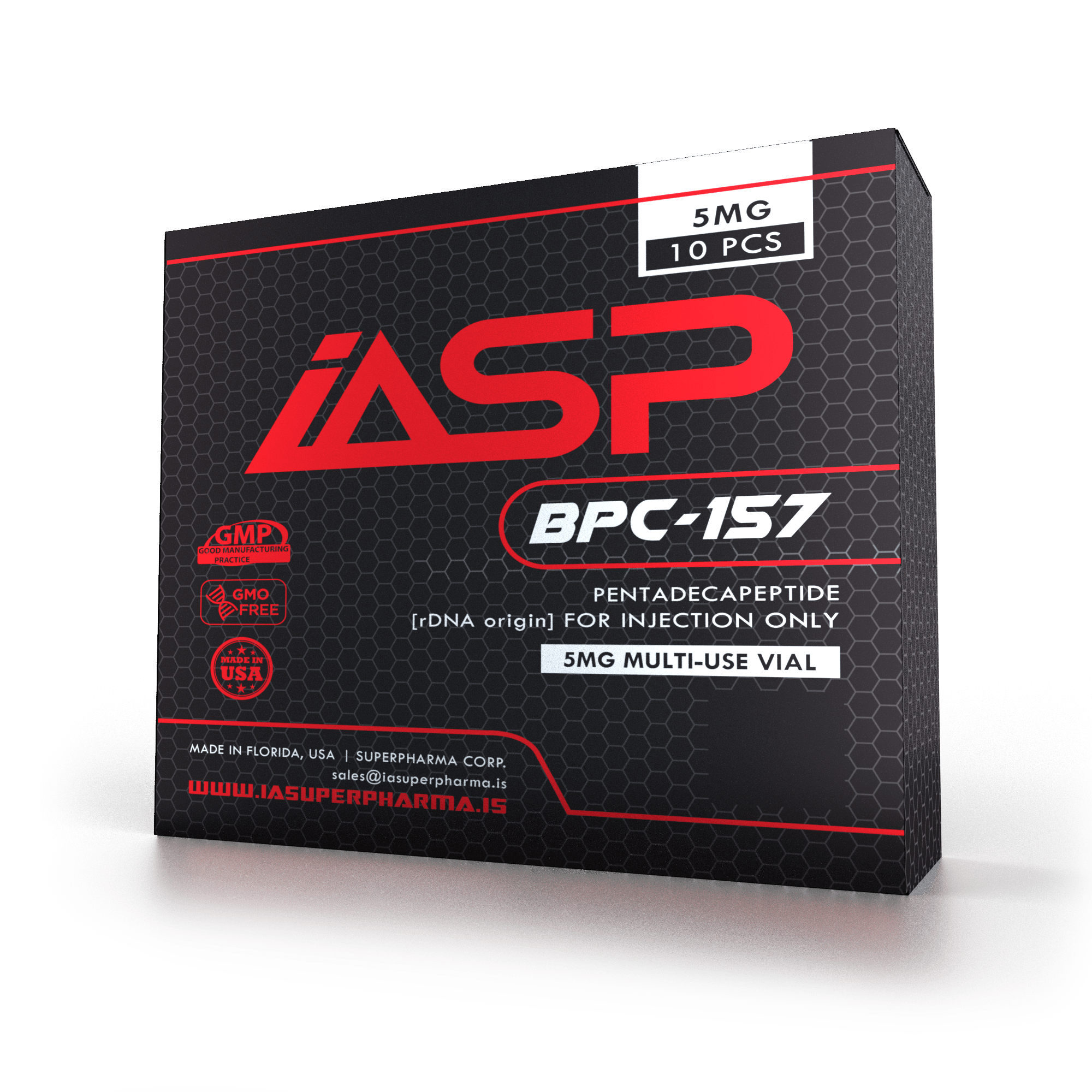This product is a box of 10 vials.
What is BPC-157?
BPC-157 stands for Body Protection Compound-157, and it's based on the natural body protection compound, or BPC. This protein exists naturally in the human gut. It helps a lot by guarding the digestive tract's lining against harm, aiding in fixes, and supporting the growth of blood vessels.
The man-made version of BPC-157 is a 15-amino-acid chain taken from the bigger BPC protein. It keeps many of the healing traits from the original. Researchers have seen its impact on several areas, including:
- Repairing wounds
- Forming new blood vessels
- The process of blood clotting
- Creating nitric oxide
- How the immune system works
- Gene activity
- Controlling hormones, especially in the gut's nervous system
Sequence: Gly- Glu-Pro-Pro-Pro-Gly-Lys-Pro-Ala-Asp-Asp-Ala-Gly-Leu-Val
Molecular Formula: C62H98N16O22
Molecular Weight: 1419.556 g/mol
PubChem CID: 108101
Wound Healing
In the digestive tract, BPC naturally keeps the protective mucous layer strong to shield deeper tissues from harsh stomach acids, bile, and other substances needed for breaking down food and taking in nutrients. Part of how it does this involves pulling in fibroblasts. BPC-157 affects fibroblasts in a way that depends on the dose, helping them spread faster both in lab dishes and living bodies, which leads to quicker growth and movement. These cells play a central role in mending injuries since they build the foundation proteins outside cells, such as collagen, fibrin, and elastin.
Vascular Growth and Collateralization
BPC-157 strongly promotes new blood vessel formation, speeding up how the cells lining vessels multiply and expand. Rat studies demonstrate that it greatly boosts the development of backup blood routes when blood flow gets blocked. While this shows up most in the gut, signs point to similar help in heart, brain, and muscle areas too. That means BPC-157 could serve as a treatment after events like strokes or heart attacks, and also help scientists explore ways to encourage recovery after low-blood-flow damage. Tests with chicken embryos suggest part of this happens by activating VEGFR2, a receptor on cell surfaces tied to nitric oxide signals. This receptor seems key for the growth, spread, and survival of vessel-lining cells.
Lab work with cells has shown "vascular running" after using BPC-157. This means vessels extend toward injured spots or around blockages to restore flow and keep cells working. Such an ability might lead to oral treatments for gradual artery narrowing, like in heart disease from plaque buildup. In the future, this could reduce the need for operations such as inserting stents or bypassing arteries with grafts.
Tendon Healing
With its effects on drawing fibroblasts and growing vessels, it's no shock that BPC-157 yields good results in animal tests for injuries to tendons, ligaments, bones, and other connecting tissues. These injuries heal slowly, mainly because blood doesn't reach them well. Limited blood means repair cells like fibroblasts arrive late and can't fix as much as needed. Both lab and animal tests on rat tendons show BPC-157 boosts backup vessel growth and raises fibroblast numbers during harm to tendons, ligaments, or bones. Findings suggest it's better than hormones like bFGF, EGF, and VEGF at aiding recovery there.
Special staining tests with FITC-phalloidin reveal that BPC-157 strongly boosts F-actin in fibroblasts. This protein matters for cell shape and movement, playing a big part in how cells shift positions. Further checks with western blotting show BPC-157 increases activity in paxillin and FAK proteins, which are vital for cell movement.
Antioxidant Properties
In rats, BPC-157 neutralizes signs of oxidative stress, such as nitric oxide and malondialdehyde. This highlights its strength as an antioxidant. Other studies back this by showing it lowers reactive oxygen in the gut. Efforts to use modified bacteria like lactococcus lactis to carry BPC-157 into the digestive system found that the bacteria greatly raises peptide levels in cell tests.
Drug Side Effects
Side effects often limit how doctors use medicines. For example, pain relievers like ibuprofen can't be taken long-term due to risks of stomach bleeding or heart issues. Finding ways to block bad effects while keeping the good ones is a major goal in medicine, as it could improve many treatments. BPC-157 counters side effects from pain meds, psychiatric drugs, and some heart treatments.
It's expected that BPC-157 eases gut issues from certain drugs, but surprisingly, it also guards the brain, heart, and other spots. Rat research shows it prevents longer QTc intervals in the heart, which can cause dangerous rhythm problems. Such changes come from meds for diabetes, schizophrenia, and similar issues. In the same way, BPC-157 blocks other harsh effects from mental health drugs, like frozen muscles or messed-up senses. This could help treat mental conditions better, since people often stop meds because of tough side effects.
Curious about BPC-157?
Join our Facebook group to engage directly with thousands of others who use this product, and follow our Facebook/IG pages for hot updates and product announcements!


